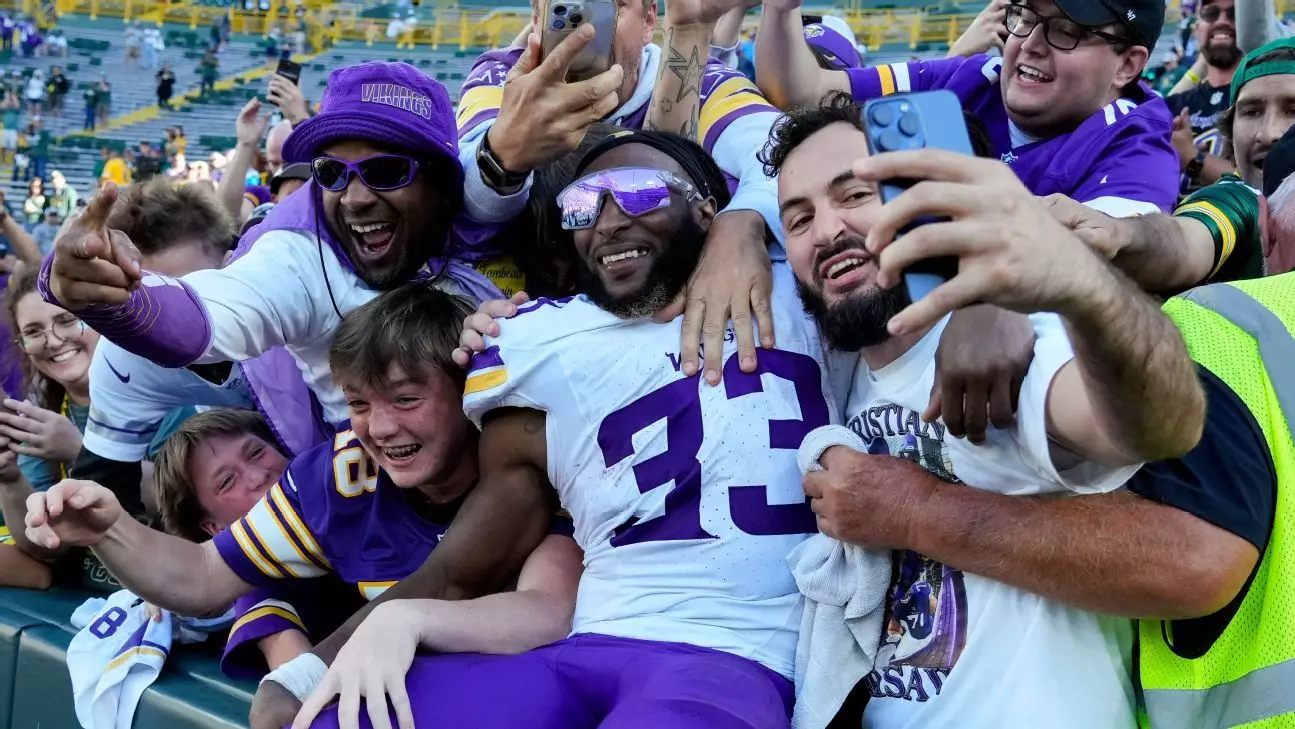As the Minnesota Vikings enter the offseason, there is much speculation surrounding the team’s backfield strategy. Following a season in which veteran Aaron Jones showcased his talents extensively, the Vikings must decide how to best utilize their running game while also considering the dynamics of the team’s roster. As discussions intensify about the future of not just Jones but the entire running back position, a closer evaluation reveals the complexities facing the Vikings as they attempt to strike a balance between experience and youth.
Aaron Jones, who joined the Vikings in what was anticipated to be a pivotal year, delivered an impressive performance in his debut season with the team. Despite battling various injuries, he amassed career-high rushing yards and tied his personal best in total yards from scrimmage. Yet, the injuries raised questions about his capacity to maintain such high output, particularly as he approaches 30 years old and free agency. Coach Kevin O’Connell has publicly acknowledged the importance of limiting Jones’s usage for the sake of his longevity and effectiveness, indicating a possible shift towards a more nuanced utilization of his skills.
Jones’s potential return for the 2025 season remains uncertain. While O’Connell expressed a desire to keep him on the roster, he also indicated a need for diversification within the backfield. The Pivotal question remains: should the Vikings invest heavily in Jones’ role or look towards integrating young talent through the draft? This concern not only revolves around the overall health of Jones but also the team’s need for a fresher approach.
The Vikings’ draft strategy will undoubtedly play a significant role in how they approach their running back situation. This year’s draft features a number of promising young running backs, with scouting reports highlighting talents like Omarion Hampton and TreVeyon Henderson. The Vikings’ limited draft capital makes this decision all the more critical; they currently hold the fewest picks in the NFL, prompting a deliberate assessment of their priorities. Should they make a move for a talented rookie to reinvigorate their backfield, or is it wiser to focus on bolstering the offensive line and defensive backfield, which also face uncertainty due to numerous free agents?
Despite previous attempts at addressing running back depth through the draft, the team’s strategy has often leaned towards trade acquisitions, as seen with Cam Akers’ integration into the squad. The reliance on trade deals rather than drafting talent poses questions regarding the long-term strategy of the Vikings. Simply put, a roster that lacks developmental depth can become problematic, particularly in high-pressure situations when veteran players may not be able to contribute.
Another salient aspect to consider is the offensive philosophy under O’Connell. Since his arrival, the scheme has leaned heavily toward leveraging star receiver Justin Jefferson, resulting in fewer designed runs. Although the number of designed runs increased slightly in 2024, the Vikings still ranked lower than many of their counterparts in run frequency. If the coaching staff intends to balance their offensive strategy effectively, it becomes critical that they find a way to successfully integrate the running game without sidelining playmakers like Jefferson.
Contemplating a more balanced approach to offensive production could fulfill the team’s needs for the 2025 season. Decisions regarding the running back role must also align with the evolving quarterback situation as they transition from Kirk Cousins to second-year quarterback J.J. McCarthy. A stronger commitment to the ground game could either help establish McCarthy’s role or lead to potential misalignment with offensive aims.
The Minnesota Vikings face an intricate web of decisions as they prepare for the upcoming season. The future of Aaron Jones, the potential for adding a young running back via the draft, and the overall direction of the offense all present durable challenges. Balancing the overall game plan while continuing to accommodate both veteran and young players will be paramount. As the Vikings sort through these options, it is clear that the franchise must find ways to effectively foster a cohesive strategy that not only enhances their running game but supports the success of the entire team moving forward.


Leave a Reply